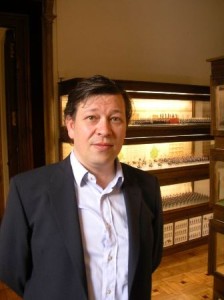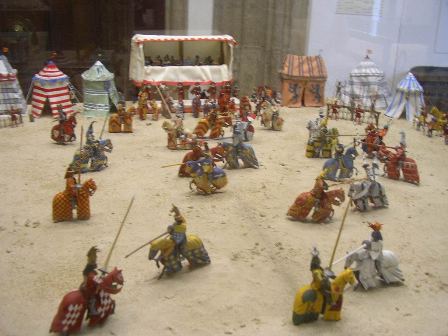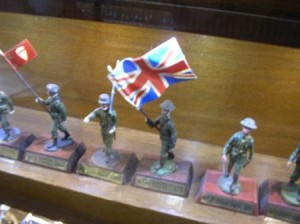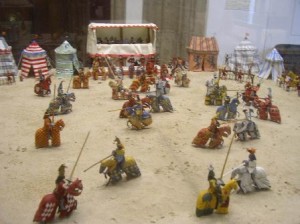The number of museums in Valencia has grown considerably in recent years, and one outstanding one is the L’Iber, which houses the largest collection of toy soldiers in the world, and is celebrating its 10th anniversary..
It is a museum with some interesting international connections. The L’Iber Museum in the medieval ‘Barrio del Carmen’ is situated in the Palace of Malferit (which rather appropriately means ‘badly wounded’) in Calle Caballeros 22, and is dedicated to toy soldiers and other similar toys.
It is the brainchild of Alejandro Noguera, an archaeologist whose father, Álvaro Noguera Giménez was a Vice President of Banco de Valencia, and who started the collection after being given toy soldiers by his own father as presents from the age of two. On Alvaro´s death, the foundation of which the museum is a part, was taken over by his French-born wife Agnes Borel.

Alejandro and his sister in law Paloma went on to increase the collection with visits to Sotheby’s and Christie’s, and to model fairs such as the one in Folkestone, Kent.
The museum also has a library replete with history books, a third of whose 50,000 volumes are in English, including documents such as the Duke of Berwick’s comments on the Battle of Almansa, which in April 2007 celebrated its 300th anniversary.

There is a scale model of the battle in the museum, which contains 5,000 figures from their total stock of over a million.
Many of the pieces are in fact from the prestigious ‘Britain’s’ company, and another exhibit shows a scene from the Valencian writer Joanot Martorell’s book Tirant Lo Blanc (now a film) of a joust that takes place in England in the presence of the English king and nobles.
Since the museum’s inauguration, there have been many special exhibitions, such as the ones about the Zulu Wars, Napoleon, the First World War, North America, and most recently the Silk Route. However, the figures in the museum’s collection are not all bellicose, as demonstrated by the exhibition on Sports and Leisure launched in November 2013.
They also frequently present newly published history-related books and have a close relationship with many writers who use the library for their research.
Alejandro and Paloma laughed as they recalled a dash they once made to London in an old car to buy up a collection from Forbes; and then having to hand-wrap each piece in silk paper in order to bring them back home.
The soldiers are not only made of tin; lead, plastic, balsa wood, ceramic, clay and even pewter are also used, and some of the lead ones even suffer from a kind of ‘lead disease’, which will eventually see them dissolve into powder.
Apart from soldiers, there are sections dealing with fashion, sport (including cricket of course), comics, and trades. They were very emphatic that the museum does not attempt to glorify war, but to contextualise history.
There are also historical sections from primitive man through the Sumerians, Egyptians and Carthaginians and one about the war in Iraq.
At present there are 10 rooms, as well as a gift shop and conference centre in the historic building which is still the family home; and there are frequent workshops, events, a ‘friends of the museum association’ and temporary exhibitions.
The museum owners (it’s completely private and has received no government aid) hope to see many international visitors in the future and recognised that British collectors were at the forefront in this ‘hobby’, which still remains a passion of the museum’s director, Alejandro Noguera.



